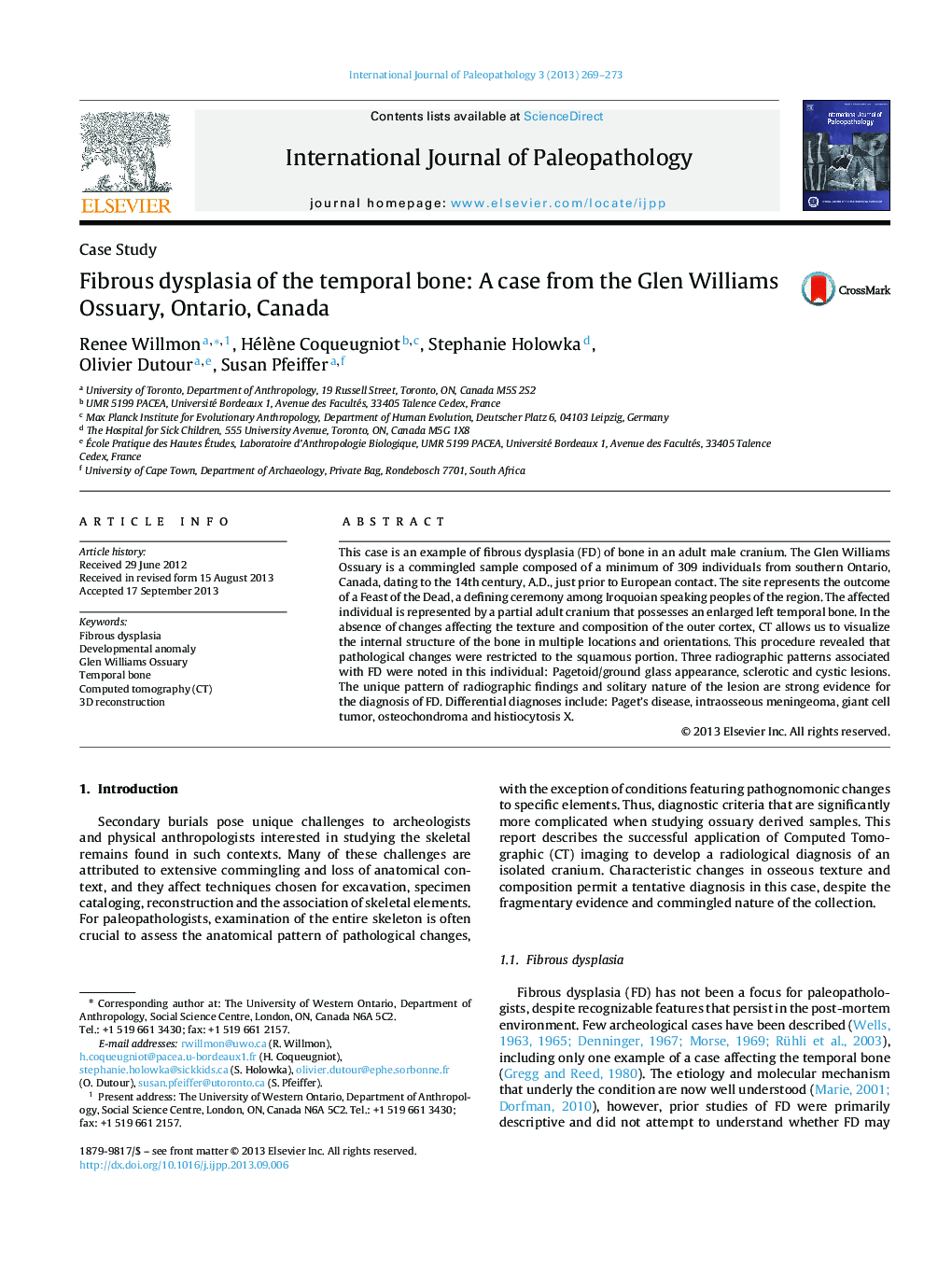| Article ID | Journal | Published Year | Pages | File Type |
|---|---|---|---|---|
| 101392 | International Journal of Paleopathology | 2013 | 5 Pages |
•We examined an isolated pathological skull from a commingled ossuary.•Conventional radiography did not help diagnosis due to superimposition.•The skull with enlarged left temporal bone was imaged using medical CT.•Ground glass appearance, sclerotic and cystic lesions were identified.•Radiological diagnosis of fibrous dysplasia based on these classic image findings.
This case is an example of fibrous dysplasia (FD) of bone in an adult male cranium. The Glen Williams Ossuary is a commingled sample composed of a minimum of 309 individuals from southern Ontario, Canada, dating to the 14th century, A.D., just prior to European contact. The site represents the outcome of a Feast of the Dead, a defining ceremony among Iroquoian speaking peoples of the region. The affected individual is represented by a partial adult cranium that possesses an enlarged left temporal bone. In the absence of changes affecting the texture and composition of the outer cortex, CT allows us to visualize the internal structure of the bone in multiple locations and orientations. This procedure revealed that pathological changes were restricted to the squamous portion. Three radiographic patterns associated with FD were noted in this individual: Pagetoid/ground glass appearance, sclerotic and cystic lesions. The unique pattern of radiographic findings and solitary nature of the lesion are strong evidence for the diagnosis of FD. Differential diagnoses include: Paget's disease, intraosseous meningeoma, giant cell tumor, osteochondroma and histiocytosis X.
